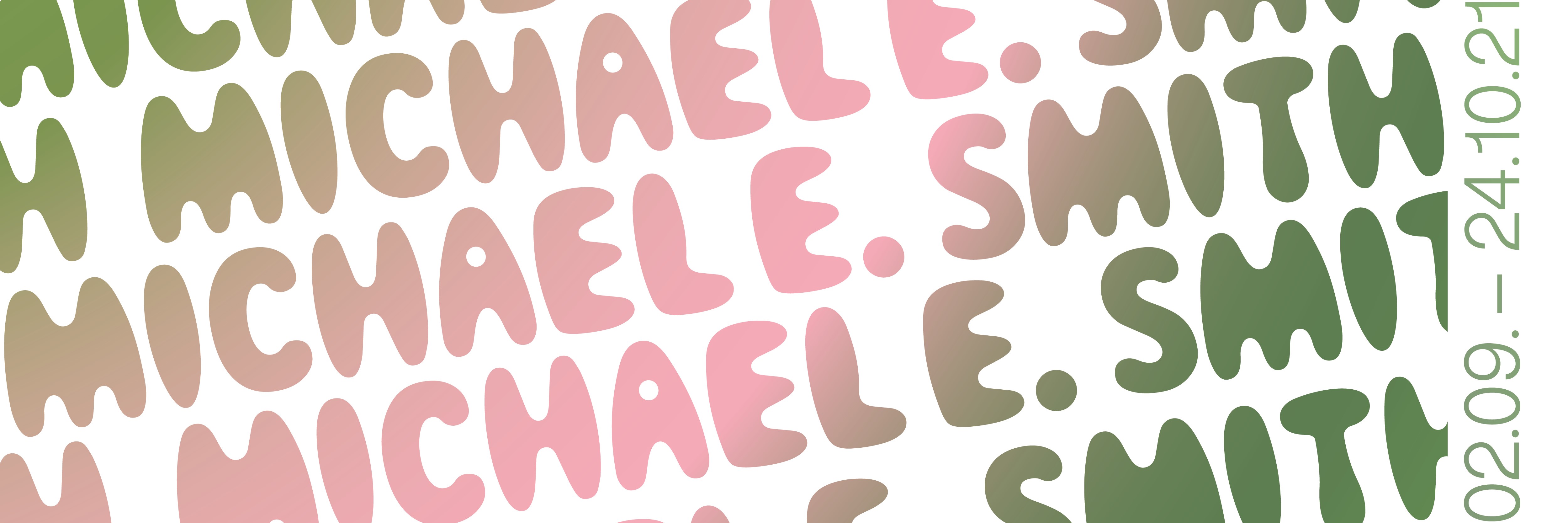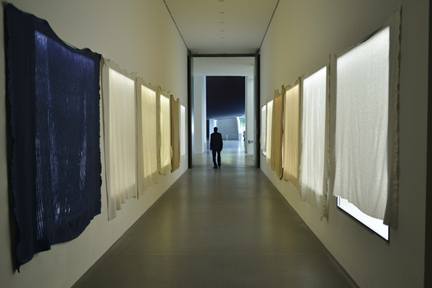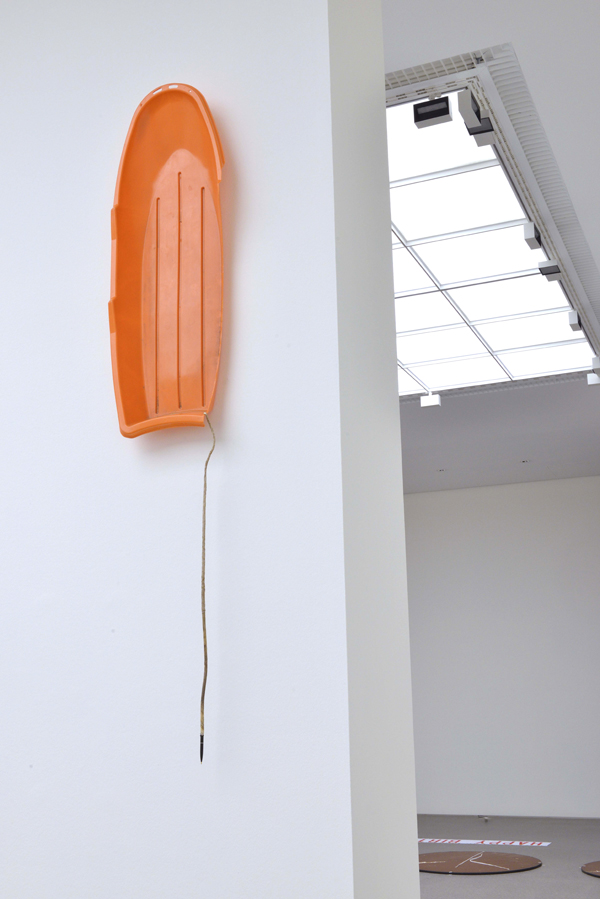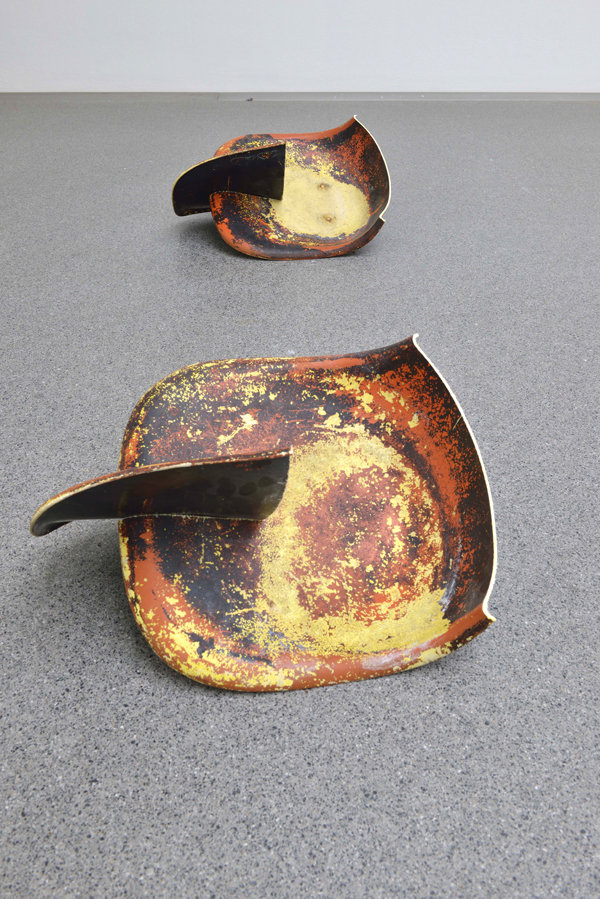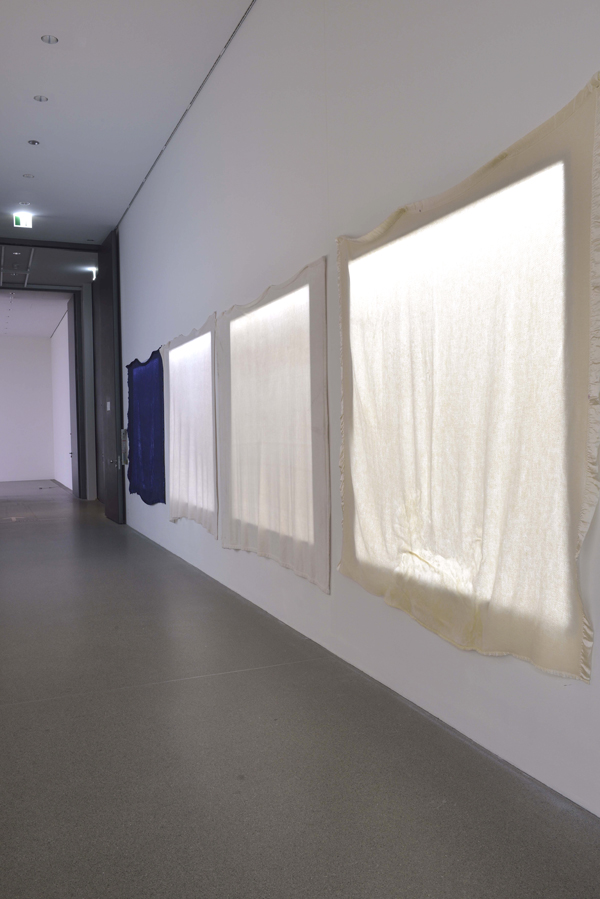THE EXHIBITION
At first glance in the exhibition galleries of the Staatliche Graphische Sammlung it appears as though someone had played a prank on us. The showcases in the entry that usually display precious works of graphic art, are now hastily covered with a wild mix of blankets, and the exhibition itself looks as though leftovers of a birthday party were scattered all over it.
At second glance, we wonder: »What exactly happened here?« Everything seems to have slanted sideways. In one way, the long-lived and left-behind objects seem familiar, in another way, they look estranged and given over to new meanings: Humor and deeper meaning, laughter and mourning, hope and resignation unexpectedly converge in this space.
The current exhibition of the Staatliche Graphische Sammlung München is a spatial installation by the American artist Michael E. Smith (born in Detroit, Michigan, USA, in 1977). He himself said about his exhibition for our museum: »I want to let the material world draw«, adding: »Most of the time when I work in an exhibition space, I am waiting for things that will show up.«
In this sense, visitors ought to take Smith by his word and his objects for what they are—articles of use that have gone through a metamorphosis and are offering us new perspectives on familiar things. It takes a moment before these objects reveal their new nature to us. But if we look closely, they start to tell us stories. Michael E. Smith’s works are carefully whispered messages about the status quo of our present. The artist thinks of them as open invitations to visitors without one-dimensional answers.

The starting and finishing point of Smith’s Munich exhibition is the showcase passage. Its tonality sets the mood for the exhibition. Because the glass windows are covered-up and illuminated from behind, the space is only dimly lit, it seems neither off-putting nor inviting. Touched by the visual impression, namely of warmth, the modest blankets leave on us when we leisurely pass them, this perception is soon obliterated by the realization that here is an elementary form of primitive housing. Very subtly, Smith finds a balance in his installation for what the objects claim to be and what they actually deliver. In all their modesty, they provide a kind of intimacy and humble private sphere that we are invading even while we do not actually know what the blankets are hiding.
Triggered to find out the source of a monotonous whir that has been steadily increasing as we approach, we enter the exhibition gallery. Here as well, Michael E. Smith’s thoughts about the art of drawing take their departure in the hardware. Or, as he puts it: »I wanted to work with the situation of drawing.« Even though he is an ingenious draftsman he was not willing to imagine a classical exhibition with drawings. He wanted discarded articles of use to visibly bear drawn traces, for them to refer to gestures of drawing, or even, to evoke phenomena of drawing—all of this without him having drawn a single line. Like in the corridor, the exhibition gallery appears in pale light and as if slanted. For unknown reasons, parts of the grates from the ventilation shafts have been removed, the floor seems to have been lowered allowing for a glimpse behind the façade of the perfect museum space.
Apparently with the same intention, a kitchen stove lies sideways and is emptied out. It touches the right partly ajar entry door, creates a space in-between, and noticeably disturbs the sense of order we are used to in museums. Also in this first part of the gallery, we encounter the electric noise that has been accompanying and bothering us, only to find that it stems from a bread-knife that is alarmingly rotating counterclockwise on the floor. Only at a closer glance do we discover that its blade has been shaped to look like a bat—both a lucky and an unlucky charm that reigns over the impending scenario like a bad omen.

Right next to the knife a carelessly printed and partly smudged »Happy Birthday«-banner has been laid out on the floor. It stifles all joy in this nearly empty space, where a paralyzing absence of who-knows-what seems to dominate. Like the stove on its side, two identical round table tops turned over and placed next to each other on the floor herald happier times of human socializing. On each of these is delineated by humble and found materials a fragile peace sign. Peace for what or whom? What is the use of deciphering in the wavy lines formed by the shoe-strings human contours as though they were substitutes for human beings?
Further on in the, gallery two bean bags appear to be sliding into the cable pit. They bear witness to the absence of people, and so do the two vintage 1960s Eames chairs that are sawn apart at the lower backs only to be remounted at ninety-degree angles. On the opposite wall and presented like a traditional exhibit is a grotesque persiflage of a Mickey Mouse mask that seems to be rising above the situation and to be laughing at everything. Mounted on an old frying pan, it looks like a hand-held mirror in which visitors might see themselves as comic figures.
Turning our backs to this ironic construct, we discover high up on the dividing wall a broken orange children’s snow sled that appears to be floating up into the air. It pulls after it a drawing pen elongated by a staff as though the sled’s departure might be captured and documented on paper with this pen serving as trip recorder for all those who would want to follow this take-off into the unknown— if only they could. In the end we never know if there actually was a party or if these were merely darker and lighter dreams.
Michael Hering
Planning your visit
Open today till 6.00 pm
Daily 10.00 – 18.00
Thursday 10.00 – 20.00
Monday closed
Barer Straße 40
80333 München
